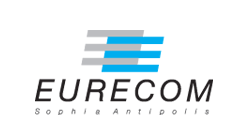Device-to-device (D2D) relaying is able to increase the network capacity, enhance the network coverage, or mitigate the interference to legacy cellular transmissions. These benefits are even emphasized if a proper incentives are offered to the users to motivate them to act as relays. We first survey the state-of-the-art incentives to show that despite a proper incentivization, the benefits from relaying are enjoyed typically only by the users directly involved in relaying, that is, either those in favorable locations to act as relays or those exploiting such relays to improve their performance. Nevertheless, many users, who are not satisfied with their quality of service (QoS), may not profit from D2Drelaying due to their unfavorable locations. Besides, the current incentive mechanisms are not able to alleviate the overloading of the base station (BS) without violating QoS of already admitted users. Thus, to cope with the spatial unfairness and the overloading of BSs, we propose resource allocation framework extending D2Drelaying benefits also to the users not directly involved in the relaying process. The proposed framework enables efficient reuse of radio resources and takes inspiration from economy concept of taxes. Moreover, it gives an opportunity to the users distributing spared radio resources to increase their virtual monetary gain, reputation, or even helping other users depending on mutual social relationships. The simulations demonstrate that the proposed concept improves the ratio of satisfied users and/or maximizes the number of newly admitted users for which the BS would not have radio resources otherwise.
Coping with spatial unfairness and overloading problem in mobile networks via D2D relaying
IEEE Wireless Communications, Vol. 31, N°1, February 2024
Type:
Conference
Date:
2024-02-01
Department:
Communication systems
Eurecom Ref:
7154
Copyright:
© 2024 IEEE. Personal use of this material is permitted. However, permission to reprint/republish this material for advertising or promotional purposes or for creating new collective works for resale or redistribution to servers or lists, or to reuse any copyrighted component of this work in other works must be obtained from the IEEE.
See also:
PERMALINK : https://www.eurecom.fr/publication/7154



